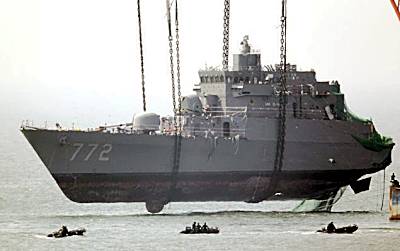Overview
During the reporting period of 24 May to 30 May 2012 the number of piracy incidents in the High Risk Area (HRA) has remained low, with only one pirate approach reported.
Specific areas of suspected and known PAG locations can be found on our PAG map: http://www.shipping.nato.int/operations/OS/Pages/PAGmap.aspx
Due to the arrival of the South-West monsoon between May and September, sea conditions in the High Risk Area are expected to become generally unfavourable for small boats.
Southern Red Sea (SRS)/Bab Al Mandeb (BAM) / Gulf of Aden (GOA)/Internationally Recommended Transit Corridor (IRTC)
There have been no significant changes over the past week. Masters are advised that fishing activity is expected to continue and likely increase in this area over the next few months.
Arabian Sea (AS)/Greater Somali Basin (SB)/Gulf of Oman (GOO)/Mozambique Channel (MC)
On 23 May (reported in the Daily Update 24 May 2012) a merchant vessel was approached (NSC 021/12) by 3 skiffs in the Bab-Al-Mandeb at position 12 48N 043 11E. Six to eight people were seen on board each skiff and weapons were sighted. The skiffs were last seen heading towards Yemeni waters.
Counter Piracy Guidance Update
Successful disruptions by naval forces over the past few months, in conjunction with masters’ adherence and implementation of BMP4, have significantly reduced the pirates’ ability to capture vessels. Somali pirates have shown the ability to act far off the coast of Somalia and in darkness. Somali pirates are in search of vessels of opportunity, such as those who are not readily employing BMP4 recommended Ship Protection measures.
Both dhows and whalers are being used as motherships. In the northern SB and AS the preferred motherships are local dhows, whereas in the southern SB, 8‑metre whalers are preferred. Details of all alerts can be found on NSC Alert details webpage: http://www.shipping.nato.int/Pages/AllAlerts.aspx
Somali pirates operating in this area are looking to pirate merchant ships, yet past activity has shown that pirates will attack both large and small yachts passing their way. Larger yachts with more people onboard or a group of yachts could be seen as a valuable and easy target for the pirates. For more information, please read the Let your Yacht take the ferry document located in the “New on the Web Page” section on the NSC website main page.
Early registration with MSCHOA before entering the HRA and regular reporting to UKMTO are highly recommended, as per Section 5 of BMP4. Prudent and timely implementation of all recommended actions and ship hardening measures in BMP4 can make the important difference of being approached, attacked, or pirated. NSC would like to remind masters that BMP4 highly recommends maintaining maximum vessel speed when transiting the High Risk Area (HRA) to prevent pirate boardings.
Masters are reminded of the need for continued adherence to Best Management Practices 4 (BMP4) when navigating throughout the entire region of the HRA. Masters are advised that the threat of piracy against merchant shipping is always present throughout the entire HRA, and are advised to ensure all necessary Self Protection Measures are implemented as recommended in BMP4.Prudent and timely application of BMP4 can make the difference between being approached, attacked or pirated. Please be reminded that BMP4 highly recommends maintaining maximum vessel speed when transiting the HRA to prevent being pirated.
It has been observed recently that some Masters are choosing to phone their Company Security Officer (CSO) first in the event of a piracy incident. One of the fundamental requirements of BMP4 states that UKMTO is the primary point of contact for merchant vessels during piracy incidents in the High Risk Area (HRA) which should avoid unnecessary delay and possible inaccurate or incomplete information reaching military commanders. CSOs should ensure their ships’ security plan reinforces the BMP4 recommendation that UKMTO should be telephoned on +971 50 55 23215 in the event of any piracy activity. UKMTO will then make every effort to contact the CSO as a matter of priority with any information received, whilst ensuring the relevant information reaches the military commanders with the minimum of delay.
Masters are also reminded that a large number of fishing vessels operate in the Southern Red Sea , Bab al-Mandeb and up to 50 nm off the west coast of India. Fishing vessels may approach a merchant ship in order to maximise fishing opportunities or to safeguard fishing nets. Fishing off India is generally carried out by mechanized or single hull boats with outboard motor carrying 4–5 crew using long lines. Masters are requested to ensure they distinguish between fishing vessels and potential pirates; fishermen may carry small arms.
As noted above, if an incident occurs, Masters are to report immediately to UKMTO via telephone and provide as much information as possible and as accurate regarding the incident. This will ensure the information is quickly provided to other ships in the area for their awareness and vigilance. If Masters are safely able to take pictures and/or video of the suspicious activity, please provide these via email to UKMTO at ukmto@eim.ae, NSC (NATO Shipping Centre) at info@shipping.nato.int and Maritime Security Centre Horn of Africa (MSCHOA) at postmaster@mschoa.org. This information will be used by Counter Piracy forces to combat piracy activity.
Source:
Allied Command Operations
NATO

 von
von 